It had been years since I last visited Chicago’s Field Museum of Natural History–decades actually. It was long before Sue came to Chicago. As a child, I went to the museum every couple of years. I remembered a hall full of dinosaur skeletons, a roomful of mummies and sore feet. Oh, and the huge building. My siblings and I used to wish we lived in that building, with its vast rooms, marble floors and sweeping staircases.
Today the neoclassical building is as gorgeous as ever. But the building is now in a more beautiful setting. it sets on the lushly landscaped lakeside museum campus created when Lake Shore Drive was rerouted. The more surprising change is the museum exhibitions, brought up to date with multi-media presentations and special effects.
Don’t miss a Midwest Wanderer post. For a FREE subscription, enter your e-mail address in the Subscribe2 box to the right and click Subscribe.
Mummies
Instead of a roomful of mummies on display, you now wind your way through a dimly lit tomb to see the 23 human mummies, animal mummies and numerous other artifacts. Children are as impressed by the exhibition as adults. During my visit one little boy kept talking excitedly about “King Tut’s friends” on display.
Sue the T.rex
The dinosaur exhibition has changed significantly, too. The space in Stanley Field Hall where they once stood is now reserved exclusively for the museum’s main attraction. Sue, the most extensive T.rex ever found, stands prominently in the hall. “Fighting African Elephants,” a work created by taxidermist Carl Akeley in the early 1900s shares the space with Sue. The dinosaurs that I remember as a child are now part of the “Evolving Planet” exhibition. The exhibition takes you through four billion years of life on Earth. Lighting, videos and hands-on interactive displays draw you into the story. When you get to the time frame in which dinosaurs roamed the planet, you’ll be awed by the number and size of the fossils and representations of dinosaur skeletons. The Genius Hall of Dinosaurs includes a 72-foot-long Apatosaurus.
<code>
It had been years since I last visited Chicago’s Field Museum of Natural History–decades actually. It was long before Sue came to Chicago. As a child, I went to the museum every couple of years. I remembered a hall full of dinosaur skeletons, a roomful of mummies and sore feet. Oh, and the huge building. My siblings and I used to wish we lived in that building, with its vast rooms, marble floors and sweeping staircases.
Today the neoclassical building is as gorgeous as ever. But the building is now in a more beautiful setting. it sets on the lushly landscaped lakeside museum campus created when Lake Shore Drive was rerouted. The more surprising change is the museum exhibitions, brought up to date with multi-media presentations and special effects.
Don’t miss a Midwest Wanderer post. For a FREE subscription, enter your e-mail address in the Subscribe2 box to the right and click Subscribe.
Mummies
Instead of a roomful of mummies on display, you now wind your way through a dimly lit tomb to see the 23 human mummies, animal mummies and numerous other artifacts. Children are as impressed by the exhibition as adults. During my visit one little boy kept talking excitedly about “King Tut’s friends” on display.
Sue the T.rex
The dinosaur exhibition has changed significantly, too. The space in Stanley Field Hall where they once stood is now reserved exclusively for the museum’s main attraction. Sue, the most extensive T.rex ever found, stands prominently in the hall. “Fighting African Elephants,” a work created by taxidermist Carl Akeley in the early 1900s shares the space with Sue. The dinosaurs that I remember as a child are now part of the “Evolving Planet” exhibition. The exhibition takes you through four billion years of life on Earth. Lighting, videos and hands-on interactive displays draw you into the story. When you get to the time frame in which dinosaurs roamed the planet, you’ll be awed by the number and size of the fossils and representations of dinosaur skeletons. The Genius Hall of Dinosaurs includes a 72-foot-long Apatosaurus.
<code>
It had been years since I last visited Chicago’s Field Museum of Natural History–decades actually. It was long before Sue came to Chicago. As a child, I went to the museum every couple of years. I remembered a hall full of dinosaur skeletons, a roomful of mummies and sore feet. Oh, and the huge building. My siblings and I used to wish we lived in that building, with its vast rooms, marble floors and sweeping staircases.
Today the neoclassical building is as gorgeous as ever. But the building is now in a more beautiful setting. it sets on the lushly landscaped lakeside museum campus created when Lake Shore Drive was rerouted. The more surprising change is the museum exhibitions, brought up to date with multi-media presentations and special effects.
Don’t miss a Midwest Wanderer post. For a FREE subscription, enter your e-mail address in the Subscribe2 box to the right and click Subscribe.
Mummies
Instead of a roomful of mummies on display, you now wind your way through a dimly lit tomb to see the 23 human mummies, animal mummies and numerous other artifacts. Children are as impressed by the exhibition as adults. During my visit one little boy kept talking excitedly about “King Tut’s friends” on display.
Sue the T.rex
The dinosaur exhibition has changed significantly, too. The space in Stanley Field Hall where they once stood is now reserved exclusively for the museum’s main attraction. Sue, the most extensive T.rex ever found, stands prominently in the hall. “Fighting African Elephants,” a work created by taxidermist Carl Akeley in the early 1900s shares the space with Sue. The dinosaurs that I remember as a child are now part of the “Evolving Planet” exhibition. The exhibition takes you through four billion years of life on Earth. Lighting, videos and hands-on interactive displays draw you into the story. When you get to the time frame in which dinosaurs roamed the planet, you’ll be awed by the number and size of the fossils and representations of dinosaur skeletons. The Genius Hall of Dinosaurs includes a 72-foot-long Apatosaurus.
More exhibits, classic and new
Many of the classic exhibits still exist in the museum. The taxidermied Bushman, the world-famous gorilla, who lived his life at Chicago’s Lincoln Park Zoo in still on exhibit.
Dazzling gemstones and rich jade, dioramas of animals in their natural habitats, insects, plants and anything else you can think of pertaining to natural science are displayed in the museum.
Another area added to the museum since I last visited years ago is the Crown Family Play Lab. The play lab was created especially for children ages 2 to 6. Exhibitions throughout the museum are brought down to a child’s level here. They can crawl through a log, hear the sounds of forest creatures by pressing a button, dress up like a bat or a turtle or play in a pueblo house.
Classic or new, exhibitions at the Field Museum are much more exciting today than I remember them as a child. One thing hasn’t changed though: I still left the museum with sore feet.
If you visit the Field Museum of Natural History
The Field Museum of Natural History, located at 1400 Lake Shore Drive in Chicago, is open 9 a.m. to 5 p.m. every day except Christmas. Last admission is at 4 p.m. Check the website for admission rates, exhibit information, and other details.
Accomodations
Check Chicago hotel rates and TripAdvisor reviews
Pin It!
**********
Disclosure: This article contains an affiliate link. If you book a room through the “Check Chicago hotel rates” above, I will receive a small commission, at no additional charge to you.
Thank you for reading Midwest Wanderer. Don’t miss a post. Enter your e-mail address below and click Subscribe to be notified whenever I publish another post. Subscription is FREE. After subscribing, be sure to click the link when you get the e-mail asking you to confirm. – Connie
More exhibits, classic and new
Many of the classic exhibits still exist in the museum. The taxidermied Bushman, the world-famous gorilla, who lived his life at Chicago’s Lincoln Park Zoo in still on exhibit.
Dazzling gemstones and rich jade, dioramas of animals in their natural habitats, insects, plants and anything else you can think of pertaining to natural science are displayed in the museum.
Another area added to the museum since I last visited years ago is the Crown Family Play Lab. The play lab was created especially for children ages 2 to 6. Exhibitions throughout the museum are brought down to a child’s level here. They can crawl through a log, hear the sounds of forest creatures by pressing a button, dress up like a bat or a turtle or play in a pueblo house.
Classic or new, exhibitions at the Field Museum are much more exciting today than I remember them as a child. One thing hasn’t changed though: I still left the museum with sore feet.
If you visit the Field Museum of Natural History
The Field Museum of Natural History, located at 1400 Lake Shore Drive in Chicago, is open 9 a.m. to 5 p.m. every day except Christmas. Last admission is at 4 p.m. Check the website for admission rates, exhibit information, and other details.
Accomodations
Check Chicago hotel rates and TripAdvisor reviews
Pin It!
**********
Disclosure: This article contains an affiliate link. If you book a room through the “Check Chicago hotel rates” above, I will receive a small commission, at no additional charge to you.
Thank you for reading Midwest Wanderer. Don’t miss a post. Enter your e-mail address below and click Subscribe to be notified whenever I publish another post. Subscription is FREE. After subscribing, be sure to click the link when you get the e-mail asking you to confirm. – Connie
More exhibits, classic and new
Many of the classic exhibits still exist in the museum. The taxidermied Bushman, the world-famous gorilla, who lived his life at Chicago’s Lincoln Park Zoo in still on exhibit.
Dazzling gemstones and rich jade, dioramas of animals in their natural habitats, insects, plants and anything else you can think of pertaining to natural science are displayed in the museum.
Another area added to the museum since I last visited years ago is the Crown Family Play Lab. The play lab was created especially for children ages 2 to 6. Exhibitions throughout the museum are brought down to a child’s level here. They can crawl through a log, hear the sounds of forest creatures by pressing a button, dress up like a bat or a turtle or play in a pueblo house.
Classic or new, exhibitions at the Field Museum are much more exciting today than I remember them as a child. One thing hasn’t changed though: I still left the museum with sore feet.
If you visit the Field Museum of Natural History
The Field Museum of Natural History, located at 1400 Lake Shore Drive in Chicago, is open 9 a.m. to 5 p.m. every day except Christmas. Last admission is at 4 p.m. Check the website for admission rates, exhibit information, and other details.
Accomodations
Check Chicago hotel rates and TripAdvisor reviews
Pin It!
**********
Disclosure: This article contains an affiliate link. If you book a room through the “Check Chicago hotel rates” above, I will receive a small commission, at no additional charge to you.
Thank you for reading Midwest Wanderer. Don’t miss a post. Enter your e-mail address below and click Subscribe to be notified whenever I publish another post. Subscription is FREE. After subscribing, be sure to click the link when you get the e-mail asking you to confirm. – Connie

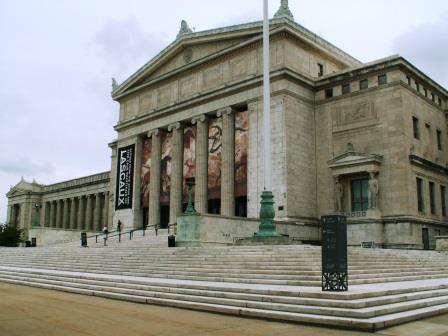
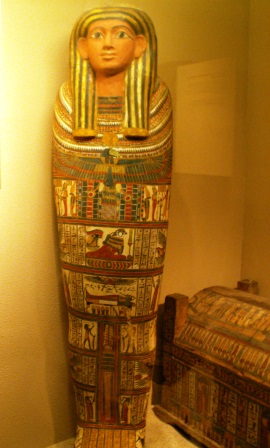

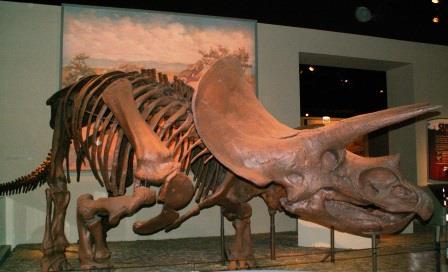
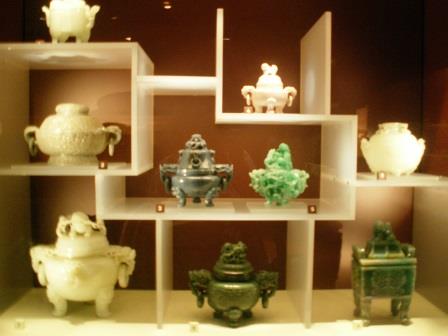
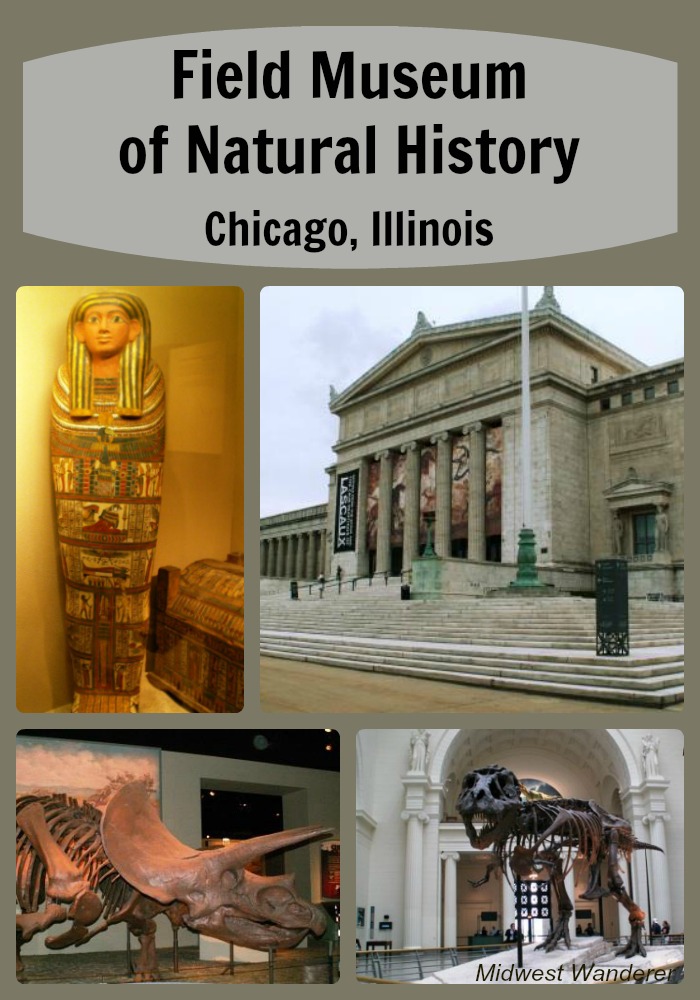
Wonderful article and pictures!